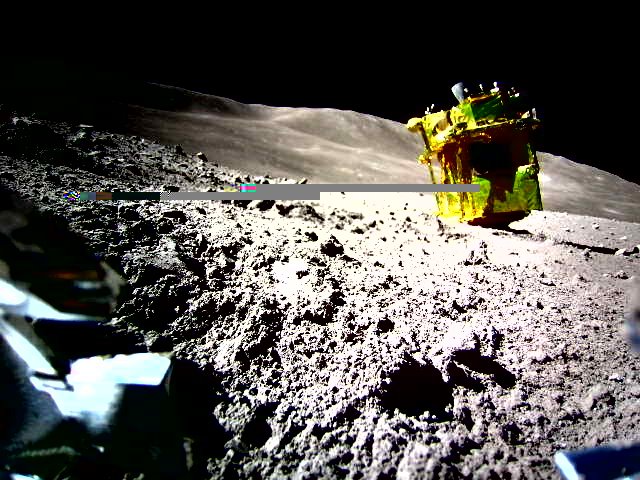The Japan Aerospace Exploration Company has just unveiled the first image of its lander on the lunar surface. It’s an exciting moment as the Spacecraft successfully landed on the moon, despite experiencing an “abnormality” with its main engine. However, this did not stop the country from becoming the fifth nation to achieve a soft landing on the moon.
JAXA reported that the main engine’s abnormality caused the spacecraft to be upside-down when it was just 50 meters from the moon’s surface. As a result, the solar panels were not able to receive direct sunlight, resulting in them being unable to charge.
As remarkable as it may seem, the Spacecraft managed to autonomously guide its descent and eventually landed at a speed of 1.4 meters per second. Though it landed at a slower speed than planned, the landing’s accuracy was still within 100 meters of the original target site.
JAXA stated that the main objective of the SLIM mission was to demonstrate its pinpoint landing technology, and it was successful in doing so despite the minor setback. In earlier updates, it was revealed that the Spacecraft had been powered down after reaching the surface to avoid over-discharging the batteries connected to the solar cells. Now, the agency is eagerly awaiting the sun’s beams to change direction to see if the solar cells can generate power.
“The Lander ended up just 55 meters east of the original target landing site, which is close enough for us to consider this mission a success,” said JAXA officials.
The Lander was also carrying two rovers, one of which was responsible for capturing the first image on the lunar surface. These rovers were ejected before the Lander touched down.
In further updates, JAXA mentioned that the cause of the loss of one of the main engines is currently under investigation. The agency assured that they will provide updates as the investigation progresses. It’s estimated that in about a week’s time, the sun’s beams will face westward towards the Lander’s solar cells, and it will become apparent if a mission recovery is possible.
Overall, it’s a momentous occasion for Japan as they join the elite group of nations who have successfully landed on the moon. Despite the unexpected challenge, the SLIM mission proved to be a remarkable technological feat that will pave the way for future lunar exploration endeavors.








